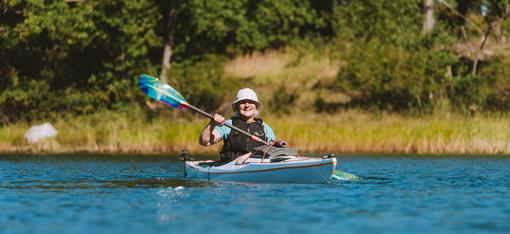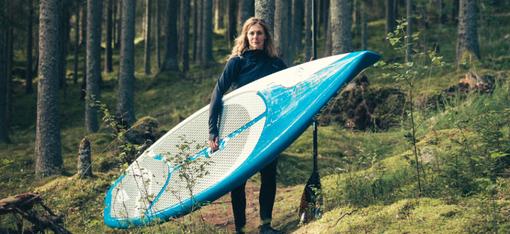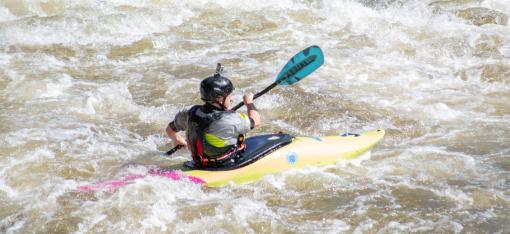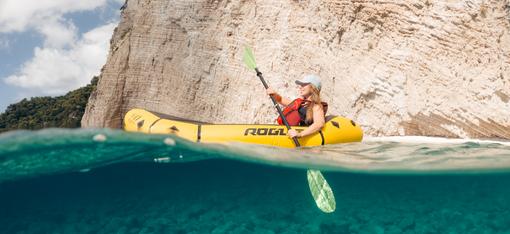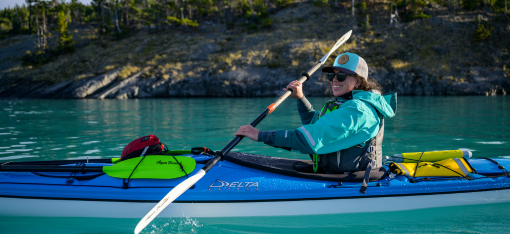Gear Review: Open-Cockpit Rec Kayaks
6-minute read + two 20-minute videos
In this two-part video series, our friend Dan Arbuckle from Headwaters Kayak compares five open-cockpit recreational kayak models for features, value and performance.

(Photo courtesy of Headwaters Kayak)
“Open-cockpit” means exactly what it says—these kayaks have large, open cockpits that make it easy to enter and exit. These recreational models are designed for calm lakes and slow-moving rivers. Perfect for the family cabin or short paddle excursions.
The models Dan compares are in the $1,000-2,000 price range. All of them will have more features and better performance than the budget kayaks found in warehouses and big box stores.
Let’s look at the first video, comparing their features:
PRO TIP: Specific models change over time, of course. But even if the models in this video are no longer sold per se, the way Dan evaluates these kayaks remains true. So you can take his tips and apply them to any boat you consider.
Features to Look for in an Open-Cockpit Kayak
All the kayaks in this video have a 3-4 foot cockpit. This makes entry and exit super easy. It also offers enough room for a child or dog to sit in front of you.
Some of the features included in these mid-range models are:
Storage hatches—Some come with removable cockpit storage for beverages and small gear items. Multiple bungees make it easy to strap down a dry bag or two. Some have watertight interior hatches—but some aren’t watertight, so be sure you know the difference before putting sensitive gear inside without a dry bag!
PRO TIP: Having a watertight hatch at the bow and stern means easier self-rescue in case of a capsize. There’s less space for water to enter and the two ends will be filled with air to help keep the kayak buoyant.
Accessories—If you plan to fish from your kayak, definitely consider a model designed for fishing. These will include features like rod holders, mounting tracks and extra storage. The Old Town Loon in the video even has a USB port and cell phone mount. Water bottle holders and comfortable thigh pads are other features to look for.
The Old Town Sorrento is designed as a touring kayak, so it has a retractable skeg (a blade at the back you can lower to improve tracking).

(Photo courtesy of @blazin_paddles)
Comfortable, adjustable seat—If you plan to spend several hours in your kayak, you want a comfy seat. You want to be able to adjust it to fit you well. Some have a frame chair that’s removable. Some have an adjustable-height backrest. In some, you can adjust the seat height itself.
Foot pedals are a must for comfort on the water. You want them to be easy to adjust while you’re paddling.
Hull width and shape will make a difference in performance, depending on your kayaking purposes. Kayaks designed for fishing are wider for better stability while kayaks designed for touring are narrower with a more streamlined hull.
A kayak’s length is part of what determines its on-water speed. The Eddyline in the video is the longest at 13 feet, which also makes it fast. It’s one example of a rec kayak that can be used for long-distance touring on calm water.
Weight—This may or may not be a factor for you. Consider how many pounds you want to haul to the top of your vehicle as well as back and forth to the water. As Dan points out, the weight a manufacturer puts on a kayak may not be its actual weight! Lift the kayaks to see for yourself how cumbersome they’ll be.
PRO TIP: Weight is partially determined by length. But it’s also determined by the material a kayak is made of. 4 of 5 of these kayaks are polyethylene, while the 5th is thermoform. Thermoform increases the price by a few hundred dollars—but also lowers the weight and noticeably increases the performance.
How to Gauge a Kayak’s Performance
In this next video, Dan takes each of the kayaks from Part 1 and gets them on the water to test their performance:
If at all possible, we suggest you paddle any kayak you’re serious about buying. You’ll notice a (sometimes remarkable) difference between brands and models.
Here are some things to look for:
Seat comfort and adjustability—Everyone’s body shape is different. What might work great for one paddler isn’t going to be as comfortable for the next. The more adjustments you’re able to make with your seat, the more comfortable it will be for half-day and full-day kayak trips.
Stability—You can expect that shorter kayaks will be wider and therefore more stable. The first boat he tests is the Old Town Loon, which is the shortest and most stable of this lineup. If you’re looking for a family cabin kayak, stability will be more important than it might be with a kayak you’ll use for touring since people of all ages and abilities will likely use it.
PRO TIP: “Secondary” stability refers to a kayak’s stability while you’re leaning to one side a bit. Can it hold that lean while you turn and maneuver?
Cockpit width and comfort—Depending on your size and leg length, one cockpit may be more comfortable for you than another. If you can’t get a potential kayak on the water, at least put it on the floor of the shop or on the ground and sit in it.
Move around to see how much leg room you have, where the thigh pads are, and how easy the foot pedals and seat are to adjust.
Maneuverability—Shorter kayaks are usually more maneuverable than longer ones. If you like slow-moving rivers with a lot of twists and turns, consider a shorter boat. Maneuverability isn't as crucial if most of your kayaking will be on lakes.
Glide and Tracking— (Tracking is how straight a kayak paddles.) Kayaks feel and perform differently when paddled. Some feel more sluggish, some feel faster. Generally, longer, narrower boats offer better glide and tracking.

(Photo courtesy of @five2nine)
Be sure to watch the two videos to get all of Dan’s comments and details about each of these models. You can see more Headwaters Kayak videos on their YouTube channel.
Do you have paddle questions our friendly Customer Service Team can help you with today? Contact them: 715-755-3405 • sales@aquabound.com
More for you...

